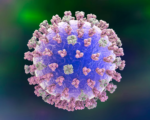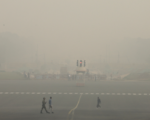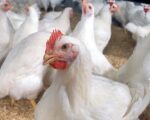Each spring, the shores of Delaware Bay transform into a bustling hub of ecological activity. Migrating shorebirds, stopping to feast on horseshoe crab eggs, double their weight before continuing their journey between South America and the Arctic. But this phenomenon isn’t just a spectacle of nature; it’s a vital research ground for scientists aiming to prevent the next flu pandemic.
For nearly 40 years, researchers from St. Jude Children’s Research Hospital have been collecting bird droppings, or guano, from this area to study flu viruses. The project, originally spearheaded by virologist Dr. Robert Webster, revealed that bird intestines—not their respiratory tracts—serve as a breeding ground for influenza viruses. These viruses are excreted in bird poop, allowing scientists to monitor flu strains as they migrate along the Atlantic flyway.
This long-term surveillance has provided critical data, helping researchers detect new flu strains and assess their potential risks. One such strain, H5N1, has gained attention recently as it spreads among birds, mammals, and even dairy cattle in the U.S. The virus, which has caused severe outbreaks in poultry, poses a growing risk of mutating to infect humans more easily.
Dr. Richard Webby, who now leads the project, likens predicting pandemics to forecasting tornadoes: understanding the normal patterns is essential for spotting dangerous changes. Recent efforts by the team include using a mobile lab to accelerate sample analysis. Despite their extensive surveillance, they didn’t detect H5N1 in Delaware Bay this year, but their work later uncovered the virus in ducks in Tennessee, specifically a strain linked to severe human cases.
A new study led by Dr. Louise Moncla of the University of Pennsylvania underscores the importance of this research. The study found that wild birds have become a reservoir for H5N1 in North America, introducing the virus repeatedly into farmed and backyard bird populations. Unlike the 2014 outbreak, which was contained through aggressive culling, the current outbreak persists because wild birds continue to spread the virus.
As H5N1 evolves, the risk of it adapting to human transmission looms. Monitoring bird populations and their flu strains offers a crucial early warning system. Dr. Pamela McKenzie, a member of the St. Jude team, highlighted the role of shorebirds in virus dissemination: “They stop in Delaware Bay to refuel, move viruses around, and carry them off again.”
The team’s work, while it doesn’t guarantee prevention, equips the world with the tools to respond swiftly if H5N1—or another flu strain—emerges as a pandemic threat.


















